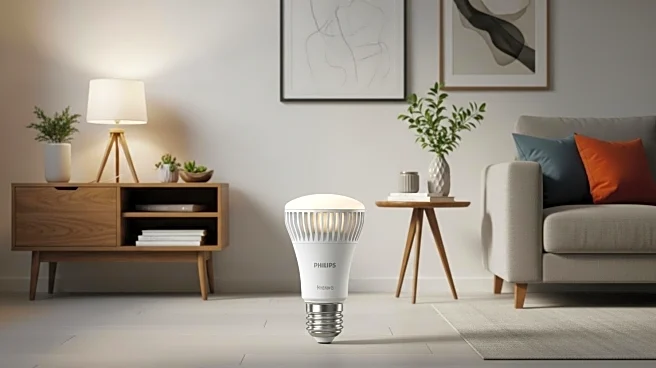What's Happening?
As temperatures drop, homeowners are increasingly concerned about rising heating bills. Smart thermostats, such as those from Nest, Ecobee, and Honeywell Home, claim to offer significant savings through advanced features like automatic adjustments, learning algorithms, and portable sensors. These devices can optimize heating and cooling settings, reducing energy usage and costs. For example, the Nest Learning Thermostat reportedly saves users 12% to 15% annually, translating to $131 to $145 in savings. Ecobee users might save up to 26%, or around $250 annually. These savings are achieved by adjusting temperatures based on user habits and environmental conditions, making smart thermostats a cost-effective investment.
Why It's Important?
The adoption of smart thermostats can lead to substantial financial savings for homeowners, especially during colder months when heating costs rise. By reducing energy consumption, these devices not only lower utility bills but also contribute to environmental sustainability. The potential savings can offset the initial cost of the thermostat, making it a worthwhile investment. Additionally, smart thermostats can participate in peak usage programs, offering further savings and energy discounts. This technology represents a shift towards more efficient and eco-friendly home management, benefiting both consumers and the environment.
What's Next?
Homeowners may consider integrating smart thermostats with utility programs like 'Connected Savings' to maximize savings. These programs allow utility companies to make minor adjustments during peak hours, offering energy discounts. However, users must weigh the benefits against potential discomfort from utility-controlled settings. Additionally, consumers should explore local rebates and incentives for purchasing smart thermostats, which can further reduce costs. As smart home technology evolves, more advanced features and integrations are likely to emerge, enhancing savings and efficiency.
Beyond the Headlines
The widespread adoption of smart thermostats could lead to broader changes in energy consumption patterns, potentially influencing utility pricing and energy policy. As more households adopt these devices, there may be increased pressure on utility companies to offer competitive programs and rebates. Furthermore, the data collected by smart thermostats could provide valuable insights into consumer behavior and energy usage, informing future innovations in smart home technology.












